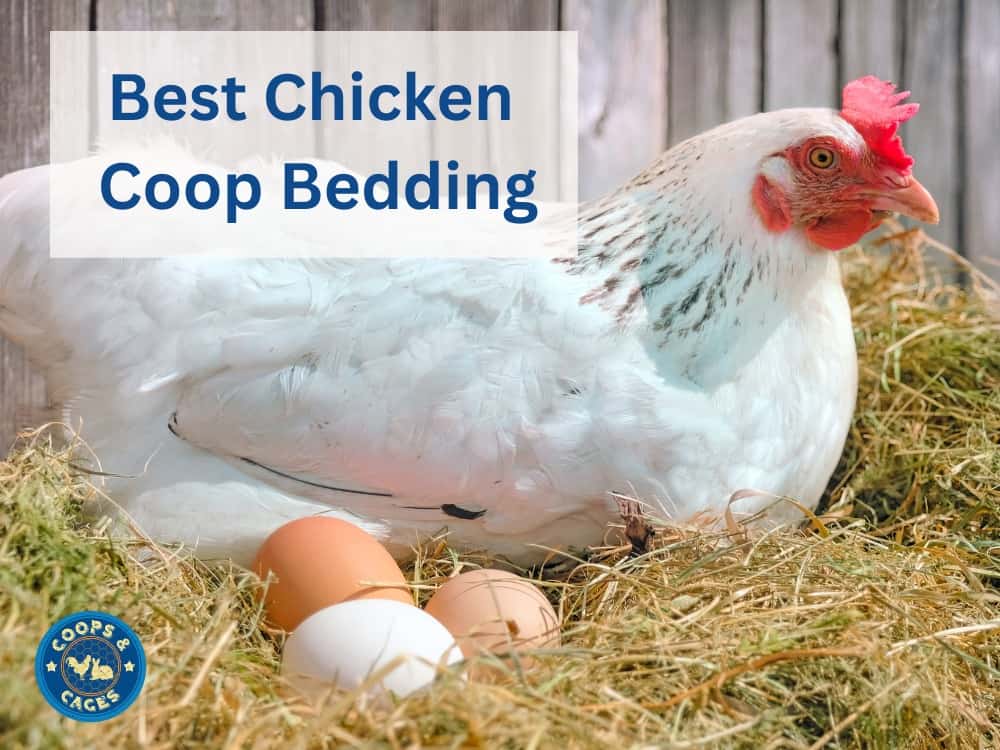Chickens, How To Do Things
Best Bedding Chicken Coop: A Complete Guide for Aussies
Ever thought about the importance of a good bed? Well, our feathered friends in the chicken coop reckon it’s pretty important too!
Just picture this: backyard chickens nesting happily in clean, comfortable bedding. It doesn’t just make for content chickens but also makes your job easier and more rewarding.
So what’s the best type to use? Straw or hay perhaps? Maybe wood shavings tickle your fancy…or could sand be superior?
We’re going to dig deep into all these options – weighing up pros and cons based on factors like absorbency, cost and ease of use. And I’ll share some top tips on maintaining the perfect chicken coop too!
- Factors to Consider When Choosing Chicken Coop Bedding
- Overview of Different Types of Chicken Coop Bedding Materials
- Pros and Cons of Using Straw or Hay as Chicken Coop Bedding
- Pros and Cons of Using Wood Shavings as Chicken Coop Bedding
- Pros and Cons of Using Sand as Chicken Coop Bedding
- Pros and Cons of Using Recycled Paper as Chicken Coop Bedding
- Tips for Maintaining and Replacing Chicken Coop Bedding
- FAQs in Relation to Best Bedding Chicken Coop
- Jordan’s Wrap
Understanding the Importance of Chicken Coop Bedding
Have you ever wondered why your chooks need a comfy bed? A well-bedded chicken coop is like a cushy mattress for us humans. It’s not just about comfort though; it also plays an important role in keeping your chickens healthy and their living space clean.
A good bedding material will absorb moisture from droppings, helping to control odour and prevent the growth of harmful bacteria. Not only that but when winter comes around, good bedding can provide much-needed insulation during those cold nights.
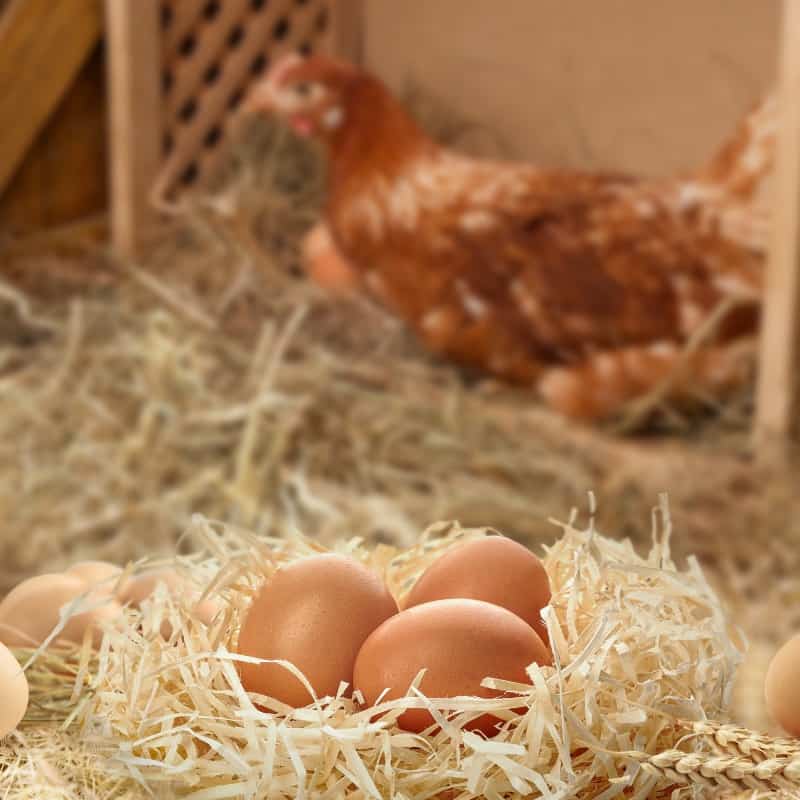
Coops and Cages reckon that there’s more to choosing the right type of bedding than meets the eye.
Considering the varying levels of absorbency, cost-effectiveness and availability is important when selecting bedding for chicken health and cleanliness.
Jordan’s Tip:
Good chicken keepers never downplay the importance of quality bedding for their chickens. It’s not just about comfort—it also promotes health and cleanliness.
The right bedding absorbs moisture from droppings, reducing odour and bacterial growth, provides warmth on chilly nights, and helps prevent conditions like bumblefoot.
Factors to Consider When Choosing Chicken Coop Bedding
Bedding selection for your chickens’ coop can significantly influence their health and well being.
Absorbency
Chicken bedding needs to be absorbent to keep the coop dry and clean. High absorbency helps reduce smells and prevents diseases caused by damp conditions.
Cost & Availability
The cost of litter materials can add up quickly if you’ve got a lot of chooks. Make sure that whatever material you choose is within your budget. Also consider its availability – it’s no use falling in love with a particular type if it’s hard to get hold off regularly in your local area.
Ease of Use
You’ll need to replace or refresh the chicken bedding regularly so ease-of-use matters too. Some types are easier than others when cleaning out backyard chicken coops; straw might be more cumbersome compared to say sand which is easily raked.
Mite Prevention
Bugs like mites thrive in certain types of bedding over others – straw tends to attract these critters more than other options like sand. This isn’t always an absolute rule though because maintaining general hygiene will play a bigger role overall.
Comfort
You might think chickens are tough creatures who don’t care where they sleep — I mean they do spend half their lives pecking at the ground. But just like us, chickens enjoy a bit of comfort. Good bedding gives them a soft place to rest and encourages egg laying.
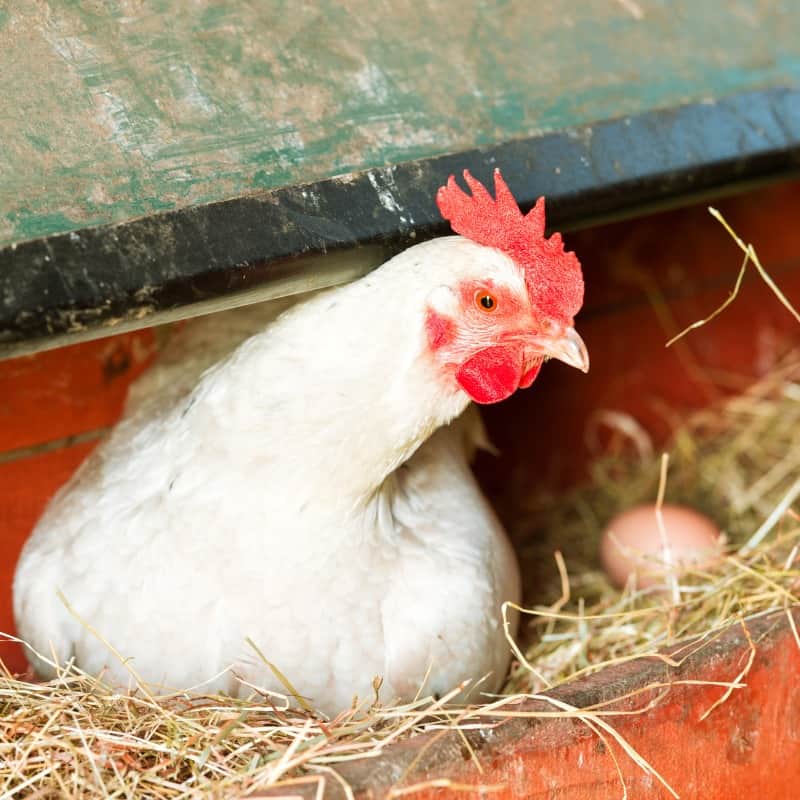
Overview of Different Types of Chicken Coop Bedding Materials
Bedding selection for your chicken coop is critical to ensure the comfort and wellbeing of your birds. Some common bedding choices include:
- Straw or Hay: Many folks use straw or hay as it’s cheap, easy to get hold off, and makes great compost afterwards. It offers good insulation during colder months but can be tricky to clean up due to its tendency to mat together when wet.
- Sand: Sand acts like kitty litter – absorbing droppings quickly while also helping control odour. Sand doesn’t compost well though, so bear that in mind if recycling is important for you.
- Pine Shavings: A favourite among many poultry keepers are pine shavings. They’re highly absorbent and give off a nice scent which helps mask any nasty smells from the coop. Plus, they’re safe for chicks too unlike cedar shavings which should be avoided due to their harmful oils.
- Recycled Paper: Using shredded paper as chicken bedding is a cost-effective and eco-friendly option. However, its tendency to clump together when wet can be a drawback, making cleanup more challenging.
- Sugar Cane Mulch: Sugar cane mulch is gaining popularity as an alternative in chicken coops. It’s highly absorbent like pine shavings, has good odour control, and is safe for chickens. However, it can be more expensive than traditional options and may have limited availability, depending on your location.
- Hemp Bedding: Last on our list we have hemp bedding; although pricier than other options it has excellent absorption capabilities making cleanup easier and reducing odours effectively.
Remember that whichever bedding material you opt for needs regular replacement – nothing breeds disease faster than old damp bedding.
Pros and Cons of Using Straw or Hay as Chicken Coop Bedding
Straw is the dried stalks of cereal plants left over after the grain has been harvested, while hay is dried grasses.
Straw is cheaper and usually used as animal bedding while hay is more nutrient dense and used as food. Both can be used as chicken bedding materials.
Advantages of Straw or Hay
Hay and straw bedding are easily available materials that won’t hurt your wallet too much. They provide comfort to chickens due to their soft texture, making them an ideal surface for roosting.
Chopped straw is easier to spread and create a more uniform and comfortable bedding in nesting boxes. A major advantage is their high absorbency which helps in keeping the coop clean by soaking up droppings quickly.
In addition, they can be composted after use – contributing positively towards waste management.
Disadvantages of Straw or Hay
Despite these benefits, there are certain aspects where straw and hay fall short. One issue is their tendency to harbour mites and other pests which could affect chicken health negatively.
This means more time will need to be spent on maintaining cleanliness in the coop than would with some other types of bedding material like sand or wood shavings.
Furthermore, while straw and hay have good absorbency initially; over time they can become damp leading to mould growth – a potential health risk for your birds.
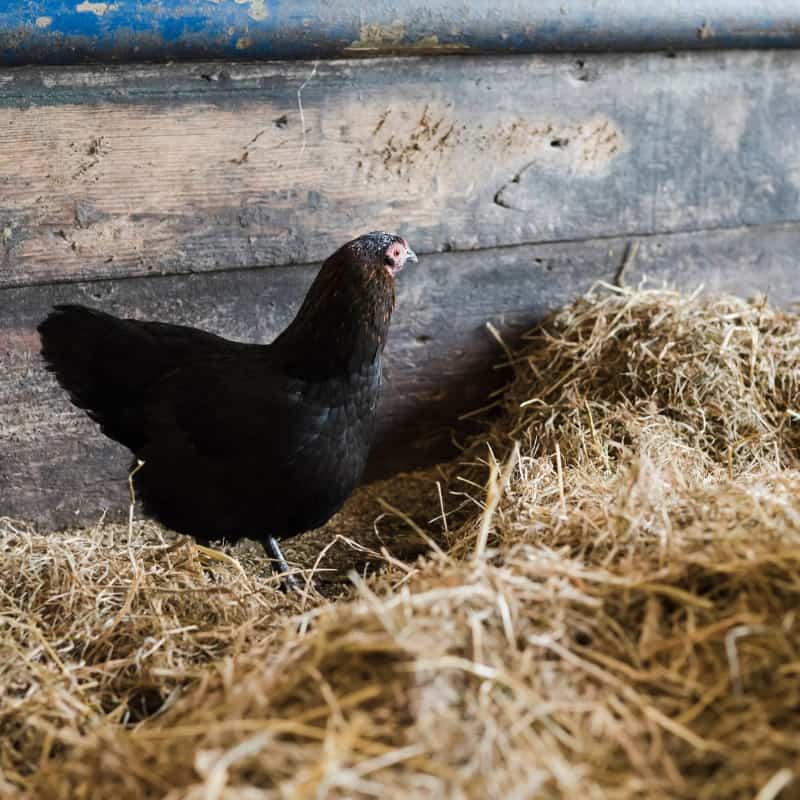
Pros and Cons of Using Wood Shavings as Chicken Coop Bedding
Wood shavings are a widely-used animal bedding option, but like anything else, there’s pros and cons to consider.
Advantages of Wood Shavings
One major benefit is that wood shavings provide a soft surface for your chickens to roost on. This makes them more comfortable than some other options out there.
Another advantage is their high absorbency. They can soak up chicken droppings well, helping to keep the coop clean. Plus, wood shavings compost nicely when mixed with manure making them an excellent addition to garden compost heaps.
Disadvantages of Wood Shavings
A drawback of using wood shavings is dustiness – airborne particles could potentially cause respiratory problems in chickens if not managed properly. Always shop for ‘dust-free wood shavings’ that have had fine dust particles removed to minimise respiratory damage.
In terms of cost-effectiveness, while individual bags may seem cheap initially, costs add up quickly if you’re frequently replacing soiled bedding because these materials decompose fast under wet conditions – making it a bit pricier compared to straw or sand-based bedding over time.
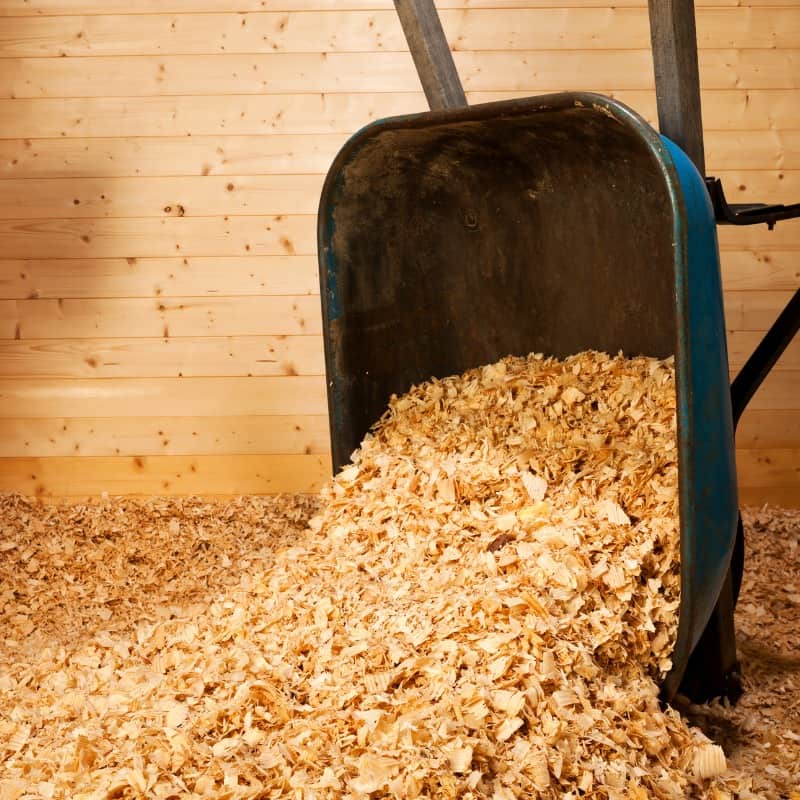
Jordan’s Tip:
Wood shavings are comfy and absorbent, making your chooks’ coop a clean and cosy spot. But beware of the dust they kick up…
… it could ruffle some feathers health-wise. And while bags might seem cheap at first, costs can add up over time due to frequent changes.
Pros and Cons of Using Sand as Chicken Coop Bedding
If you’re looking for a practical bedding option, sand can be a good pick. Though it has its advantages and disadvantages, sand is still a viable option for chicken coop bedding.
Advantages of Sand
Sand is super absorbent, which means it’s great at soaking up chicken poop. This keeps the coop cleaner for longer periods between changes. Plus, in our Aussie heat, sand stays cool to provide relief during scorching summers.
It also doesn’t harbour pests or parasites like some other beddings might. Your chickens will love dust-bathing in the sand too; think of it as their personal spa day right inside their coop.
Disadvantages of Sand
Sand litter tends to get heavy when wet making cleaning more laborious than say straw or wood shavings. It is usually easier to clean sand daily. Sand can also be quite expensive to purchase due to its weight.
Another point worth noting is that not all sands are created equal. Sharp-edged play sand could potentially harm your chooks’ feet.
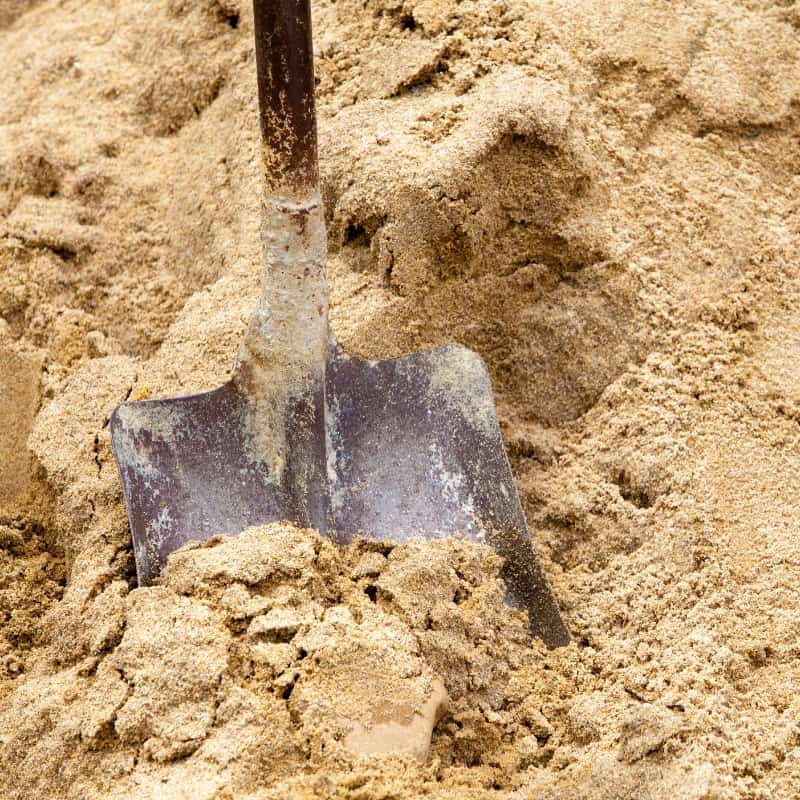
Jordan’s Tip:
Sand is a great chicken coop bedding choice, offering superb absorption, cool comfort in the Aussie heat and a natural spot for your chooks to enjoy their daily dust-baths.
But remember, it can get heavy when wet making cleaning tougher and might cost you more than other options.
Pros and Cons of Using Recycled Paper as Chicken Coop Bedding
If you’re keen on being green, recycled paper might seem like a top pick for chicken coop bedding. But just like other types of bedding, it has its perks and pitfalls.
Advantages of Recycled Paper
Shredded office or newspaper is often free or very cheap. Just ask local businesses in your area or friends who subscribe to newspapers.
Using recycled paper in the coop is also a great way to reduce your environmental footprint. It is giving new life to waste paper that would otherwise be thrown away.
Disadvantages of Recycled Paper
Although shredded paper can help moisture levels, it isn’t the most effective compared with other options such as straw or wood shavings. Recycled paper bedding can also be quite messy.
It tends to scatter easily which could lead to more cleaning time for you. Avoid using glossy magazine pages because they don’t decompose well and may contain harmful inks. Stick with plain black-and-white newsprint when possible.

Tips for Maintaining and Replacing Chicken Coop Bedding
Keeping your chook’s bedding clean is vital for their health and happiness. A well-maintained coop makes a huge difference in preventing odours, mites and diseases.
The first tip? Regularly check the coop. This isn’t just to see if it needs a tidy up, but also to spot any changes in your chicken’s droppings. Any sudden change could be an early sign of illness.
But how often should you replace the bedding? Well, that depends on the kind of bedding used and how big your flock is. As a general rule, spot clean every day or two then fully replace with fresh bedding every week.
Don’t forget to turn over the bedding frequently, so that damp paper doesn’t stay at the bottom and become a breeding ground for bacteria.
If things get too damp inside the coop, consider using multiple types of bedding. Some of our customers line the roosting area with newspaper then put a layer of wood shavings on top.
When it is time to clean, they simply roll up the newspaper with the wood shavings inside and pop it into the compost. This makes cleaning simple and doubles the absorbency of your bedding!
Deep Litter Method
The deep litter method is a popular approach to chicken coop bedding in colder climates. In this method, a layer of bedding material is continually added to the coop floor over time, rather than completely replacing it.
As the bedding accumulates, microbial activity helps break down droppings and waste, creating a composting effect that can provide warmth during colder months.
However, in the hot Australian summer the deep litter method can become smelly and provide no cooling relief for your flock. We do not recommend this method using Coops and Cages chicken coops as the litter can overflow through the wire mesh walls.
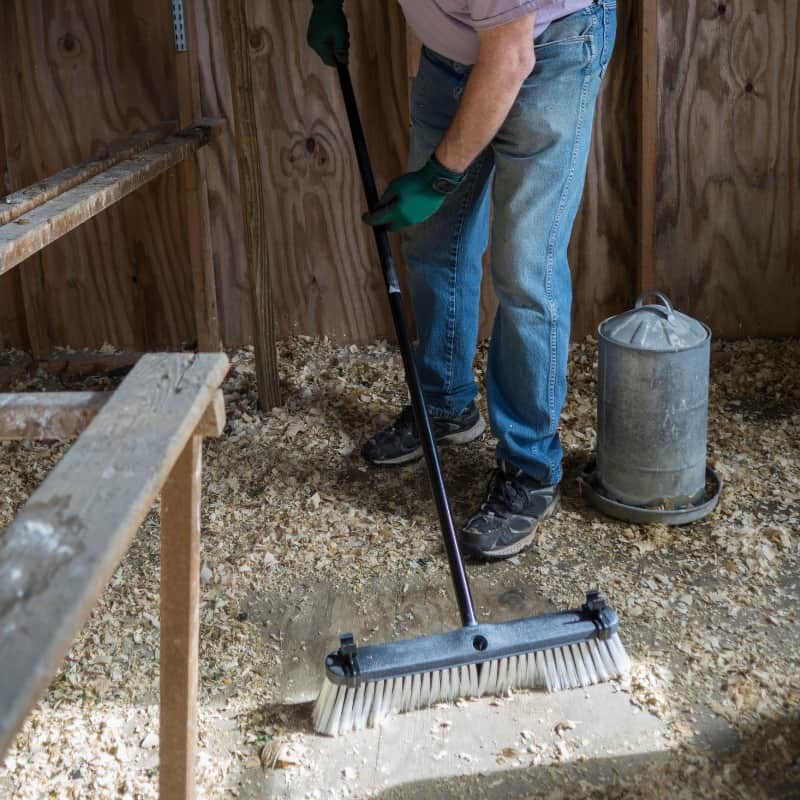
FAQs in Relation to Best Bedding Chicken Coop
What Is The Best Bedding For Chickens Smell Control?
Sand is brilliant at controlling odours because it dries out chicken poop quickly.
What Is The Warmest Bedding For A Chicken Coop?
Straw or hay are your go-to choices. They provide great insulation and keep chooks cosy in cooler weather.
Should Chickens Have Bedding In Their Coop?
Absolutely! Bedding keeps chooks comfortable, reduces smells, helps manage waste and lowers risk of disease spreading among your flock.
Jordan’s Wrap
So, we’ve scratched around the topic of the best bedding chicken coop options. It’s evident that there is no universal solution.
Your choice will depend on what ticks your boxes: cost-effectiveness, easy maintenance or maximum comfort for your feathery mates?
Remember these tips when choosing and maintaining your coop’s bedding. Happy hens mean lots of eggs!



